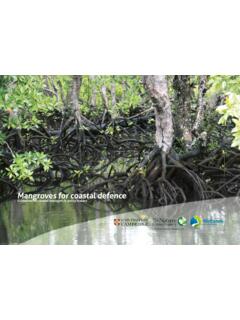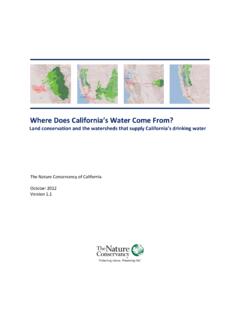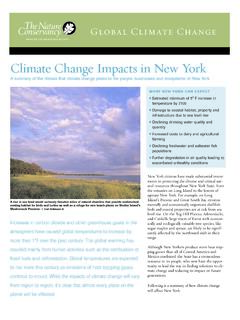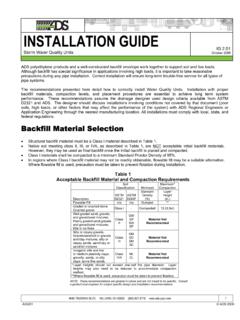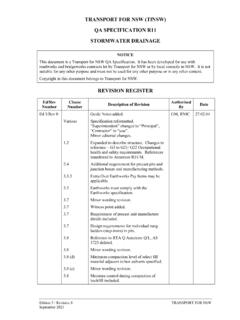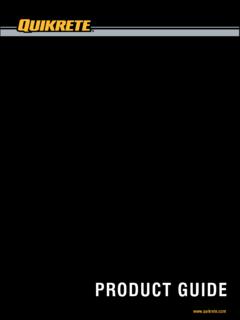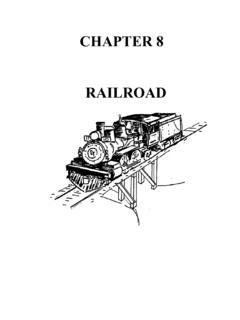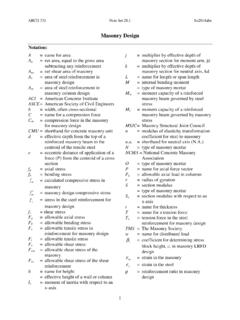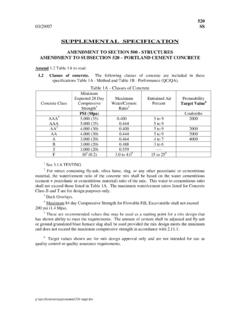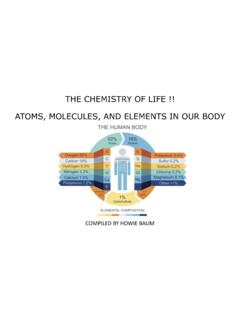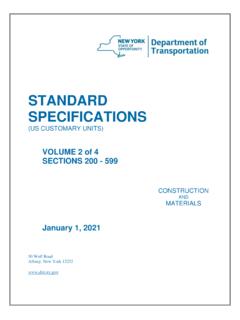Transcription of To avoid adverse effects on humans, wildlife and the ...
1 GENERAL STANDARD EXAM REVIEW QUESTIONS. The following questions and corresponding answers are examples. The questions and corresponding answers may or may not appear on the exam you will be given. 1. The goal of IPM isn't to eliminate the entire pest population but . To avoid adverse effects on humans, wildlife and the environment (The questions is something like the above, not sure exact wording). 2. Which of the following words is that number of pests per plant or the amount of damage to a plant at which point control measures should begin? Economic Threshold 3. What can be said about insects? They have three pairs of jointed legs. 4. Which of the following is an incomplete life cycle?
2 Egg, nymph and adult. 5. The disease that is generally the result of unfavorable growing conditions, such as temperature or moisture extremes, soil compaction, pesticide or fertilizer excess, Noninfectious Disease 6. The first step in planning a successful weed control program is? Identify the weed (scouting). 7. Broadleaf weeds differ from grasses how? They have netted veins that are usually less elongated than that of grass leaves. (This question may be the opposite, how do grasses differ from broadleaf weeds . leaves are more elongated than wide, but I think it is the question above). 8. This weed germinates in the spring, develops a root system and a low-growing cluster of leaves called a rosette?
3 Biennial 9. The part of the pesticide that kills is the? Active ingredient 10. Wettable powders when mixed with water . Require agitation 11. What do Surfactants do? Decrease the surface tension of water, allowing the water carrier to spread over the surface. 12. Can you mix two pesticides together if the label doesn't specify they can be mixed? Yes, your responsibility to make sure they retain their properties. 13. How can you tell two pesticides are not compatible? The mixture may curdle, gel or become sludge like. 14. How long is certification valid in Illinois, before an applicator/operator must retest? P 44. Each exam is valid for a period of up to 3 years as long as annual renewal forms are submitted.
4 15. The pre-harvest interval is the? Amount of time that a crop can be harvested after it has been sprayed. 16. Which of the following is on every label? Keep out of Reach of Children. 17. Who can purchase Restricted Use Pesticides? Certified Applicators or persons under their direct supervision. 18. What part of the label should you look under to find the minimum PPE you should wear? Precautionary Statement. 19. How often should you read the pesticide label? Every time you purchase the product- can be used up to the phase out date 20. The Office of Safety and Health Administration protects the nation's workers through dissemination of information . Worker Right-to-Know.
5 21. Which of the following dermal exposures is the most serious? When a pesticide mixed with oil crosses the skin barrier and into the bloodstream, the results can be fatal. 22. If you spill highly concentrated chemicals on your cloths how should you clean them? Don't, dispose of them properly. 23. When filling, rinsing, draining, and cleaning your equipment preferably the area should have? A wash pad, wash rack, or concrete apron with a well designed sump to catch contaminated water. 24. What is the best way to get rid of excess chemical? Dilute excess and reapply to area, but do not exceed label rates for area. 25. What is a major concern of drift? Off target damage to vegetation and people.
6 26. Which of the following is important to consider when purchasing and applying a pesticide? a) The label is a legal document b) Before you buy and apply a pesticide read the label c) A General Use pesticide is not given a classification on the label d) All of the above 27. What is a major complaint to the Dept. of Agriculture about spraying? Drift from farms, etc . 28. If you were going to spray an area and there are bee colonies with-in two miles what should you do? Contact the bee keepers 48 hrs. in advance so the colonies can be moved. 29. When is the best time to spray if bees are in the area? Dawn and dusk. 30. Must be used with special caution near bee hives, since bees may carry them back to the hive and poison the entire colony?
7 Microencapsulated herbicide 31. How would you determine if the pesticide you are using is prone to volatilization? Check the label, often indicates. 32. Who do you have to contact if you have a chemical spill? Illinois Emergency Management Agency (IEMA), they in turn notify the appropriate agency for response, available 24hrs. (There may be a similar question and the answer could be to contact the emergency number on the label also available 24hrs.). 33. Which of the following is an example of a surface-water advisory? Allow a 66-foot buffer area between the application area and surface water sources, like a stream. 34. Pesticide breakdown is much slower in groundwater, why?
8 Low oxygen and light conditions. 35. Which of the following influences a pesticides leaching ability? Soil texture and organic matter. 36. A highly soluble pesticide is .? Poorly adsorbed and more likely to leach. 37. What type of nozzle sprays in a cone pattern with droplets throughout? Solid-cone. 38. When raising the boom sprayer you .? Reduce or eliminate the overlap and increase drift. 39. What are some factors that you should think about before spraying? Wind, temperature, droplet 40. When using a tree injection system you should? Use low pressure and allow the tree to uptake chemical. 41. For treatment to be effective against perennial weeds? Must use a translocated herbicide to control vegetative reproductive structure 42.
9 What should you do if you spill chemical on your clothes? Remove clothes, wash area thoroughly with soapy water, etc. 43. The PPE that you wear when applying pesticides should be laundered? Wash as soon as possible, do not let clothes sit around. 44. What type of nozzle would you use for a band application? Even flat fan or flat fan nozzle? (This was a question on the test, but couldn't find a concrete answer in book.). 45. What pump would you use if you wanted low flow rates and psi of up to 1000? Piston. 46. When laundering clothes that were worn while spraying ? Launder daily (within eight hours), keep separate from other clothing and inform person washing clothes of pesticide use.
10 47. How do you proper clean your nozzles? Move to an area where it is safe and use a nozzle brush to clean nozzles. 48. When tanking mixing concentrates or highly toxic sprays ? Wear a face shield or tight fitting goggles with antifog lenses and indirect venting. 49. Which substance produces gas, vapors, fumes and requires special licensing to handle? Fumigants 50. Who enforces the Federal Insecticide, Fungicide and Rodenticide Act (FIFRA)? The Environmental Protection Agency (USEPA). 51. Who is responsible for enforcing the laws that regulate the use of pesticides for structural pest control? Illinois Department of Public Health. 52. An individual who applies pesticides for any purpose on property other than that owned, rented or leased by themselves or their employer is a ?




